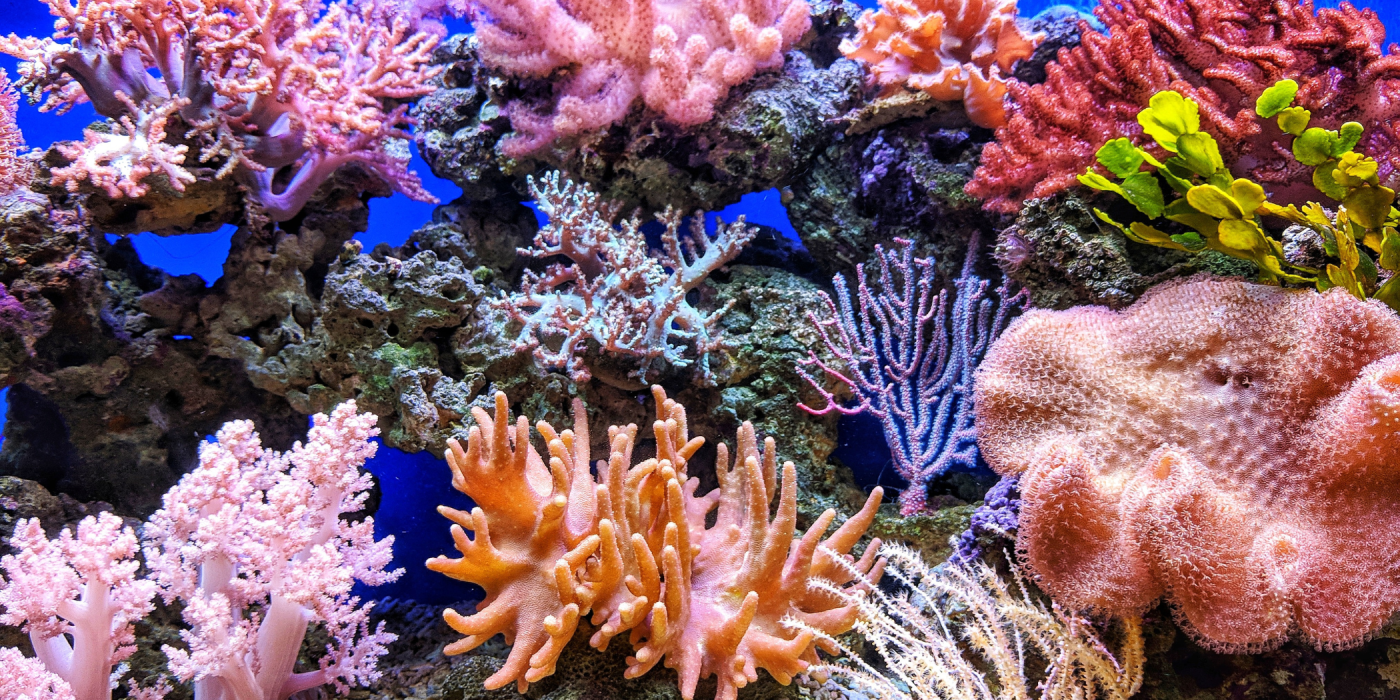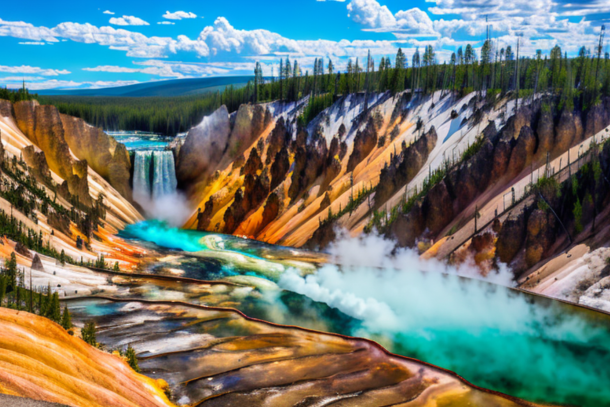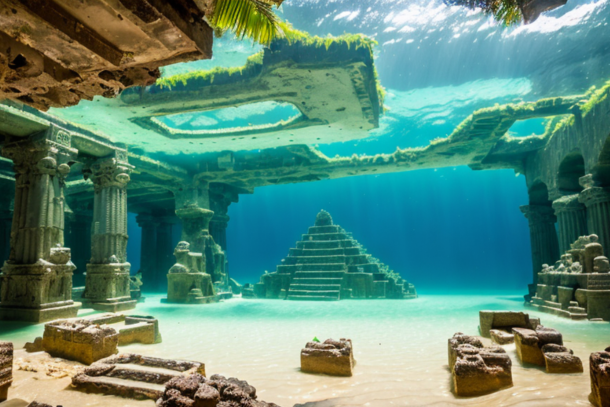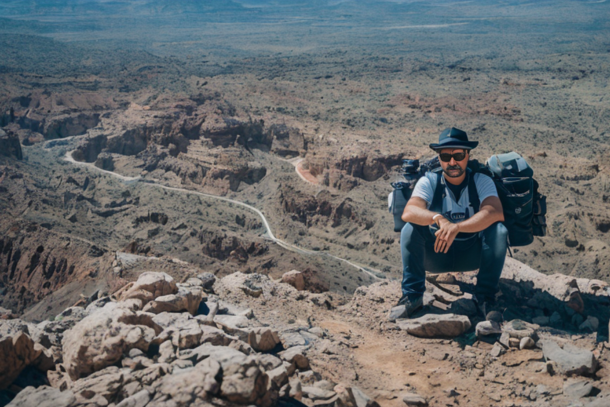The Great Barrier Reef: A Geological Gem and Biodiversity Beacon

Spanning over 2,300 kilometres and nestled within the azure waters of the Coral Sea lies an unparalleled marvel of nature - the Great Barrier Reef. This living tapestry, teeming with a mosaic of corals, is not merely a collection of marine organisms but a profound testament to the intricate dance of evolution and adaptation.
A Natural Jewel
Situated off the northeastern coast of Australia, the Great Barrier Reef is the crown jewel of marine biodiversity. As the world's largest coral reef system, it's a sprawling underwater realm composed of over 2,900 individual reefs and 900 islands. These numbers, however impressive, scarcely capture the majesty and vibrancy of this marine paradise.
More than Just a Reef
At a glance, it might seem like a mere collection of colourful corals. Yet, this intricate system plays a pivotal role in our global ecosystem. Serving as a habitat for countless marine species, the reef acts as both a protector and provider. From tiny plankton to the majestic humpback whale, the reef supports a rich tapestry of life, making it a hotspot of marine biodiversity.
The Great Barrier Reef isn’t just a spectacle of natural beauty; it’s a living testament to the wonders our planet is capable of crafting. As we delve deeper into understanding this marine marvel, we're not only exploring the secrets of the ocean but also gaining insights into the delicate balance that sustains life on Earth.
The Dual Essence of Corals: Biology Meets Geology
Corals are nature's marvellous anomalies, blurring the lines between the realms of biology and geology. These vibrant underwater ecosystems, which paint the seascape in a riot of colours, serve as a testament to the intricate dance between living organisms and the Earth's crust.
Corals: The Living Entities
At the heart of each coral formation is a community of minuscule animals known as coral polyps. These soft-bodied organisms form colonies, which through mutualistic relationships with photosynthetic algae called zooxanthellae, flourish and derive sustenance. The algae, in return, receive a protected environment and the compounds they require for photosynthesis. This beautiful synergy ensures the vibrant hues of the coral reefs and their continual growth.
Calcification: Building the Geological Framework
Over time, these polyps excrete calcium carbonate – a process known as calcification. This results in the creation of a hard, protective limestone skeleton around each colony. As generations of polyps live, reproduce, and eventually die, they leave behind their skeletons. It's this cumulative layering of calcium carbonate structures that forms the vast, sprawling coral reefs we observe today, making them geological masterpieces.
In essence, corals are a wondrous amalgamation of life and rock. They represent a confluence of biological activity and geological processes, reminding us of the intricate and often interdependent relationships that underpin the natural world. As we admire the Great Barrier Reef and other coral formations, it's worth pausing to appreciate this dual essence that defines their very existence.
The Genesis and Evolution of the Great Barrier Reef
The Great Barrier Reef, renowned as the planet's most expansive coral reef system, is more than just an eye-catching marine spectacle. Beyond its vibrant beauty lies a compelling tale of evolution that spans millions of years, shaped by intricate ecological, geological, and climatic processes.
Primordial Beginnings
Around 500 million years ago, the area now occupied by the reef was part of a vast land. Evidence from sedimentary rock layers indicates that this region was occasionally submerged beneath shallow seas, playing host to an array of ancient marine life. These early chapters laid the foundational stones for what was to eventually become the reef.
Coral Colonisation
It wasn't until approximately 20 million years ago that the first corals began to take root. As the Australian continental plate drifted northwards, warmer waters favoured coral growth. Over time, these tiny polyps built vast limestone skeletons, slowly but steadily establishing their dominance in the region.
Modern Reef Formation
The shape and structure of the reef we recognise today began to form around 10,000 years ago, following the end of the last Ice Age. As sea levels rose, flooding the continental shelves, corals swiftly colonised the newly available space, laying down their limestone foundations.
Through countless millennia, subjected to both natural adversities and periods of calm, the Great Barrier Reef has morphed into its current form—a testament to Earth's ceaseless capacity for change and adaptation. This vast marine ecosystem stands not only as a monument to natural beauty but as a beacon highlighting the intricacies of geological transformation.
Celebrating the Reef's Rich Biodiversity
The Great Barrier Reef, sprawling across the azure waters of Australia's northeastern coast, is often lauded for its breathtaking beauty. But beyond its shimmering surface lies an even greater marvel: a dizzying array of marine life that transforms this reef into one of the most biodiverse ecosystems on the planet.
A Kaleidoscope of Marine Species
This expansive marine sanctuary is a veritable underwater metropolis. Amongst the intricate coral formations, you'll find an eclectic mix of residents: from the technicoloured clownfish darting between anemone tentacles to the majestic sea turtles gliding gracefully over the seabed.
Notable Inhabitants:
- Whale Sharks: The gentle giants of the ocean frequent these waters, feasting on plankton.
- Manta Rays: With their sweeping fins, these creatures often put on a balletic display for onlookers.
- Dugongs: Sometimes referred to as 'sea cows', these herbivores graze peacefully on the reef's seagrass beds.
A Crucible for Coral Varieties
The reef isn’t solely about its mobile residents. Over 400 types of coral, from branching staghorn corals to massive brain corals, provide the essential backbone of this ecosystem, creating habitats and refuges for countless marine organisms.
In its entirety, the biodiversity of the Great Barrier Reef is staggering. Each species, no matter how small, plays a pivotal role in maintaining the balance and health of this aquatic wonderland. As we delve deeper into its waters, we're reminded of the intricate tapestry of life that Earth harbours and the duty we have to preserve it.
Conservation Challenges at the Great Barrier Reef
The Great Barrier Reef, a veritable jewel of the natural world, is currently facing a plethora of challenges that threaten its very existence. Amid these challenges, climate change stands out as a particularly menacing adversary, leading to a number of direct and indirect consequences for this fragile ecosystem.
Climate Change and Coral Bleaching
One of the most discernible impacts of climate change on the reef is the phenomenon of coral bleaching. As global temperatures rise, so do sea surface temperatures. Warmer waters stress the corals, causing them to expel the symbiotic algae, known as zooxanthellae, that lend them their vibrant colours. Without these algae, corals turn ghostly white and, if the stress persists, they can perish.
Rising Sea Levels and Ocean Acidification
In addition to elevated temperatures, climate change brings about rising sea levels, potentially altering the delicate balance of light and water that corals require. Moreover, increased levels of CO2 lead to ocean acidification. As the seas absorb more carbon dioxide, they become more acidic, a condition which makes it harder for marine creatures, including some corals, to build and maintain their calcium carbonate structures.
Conservation Efforts Underway
In the face of these looming threats, concerted conservation efforts are being initiated. Governments, NGOs, and local communities are investing in research, reef restoration projects, and campaigns to raise global awareness. While the challenges are daunting, the collective will to protect and restore the Great Barrier Reef remains undiminished. Through these endeavours, there's hope that future generations can continue to marvel at the reef's unparalleled beauty.
Celebrating the Great Barrier Reef's Global Significance
The Great Barrier Reef, in all its vastness and beauty, stands not only as a testament to the marvels of marine geology but also as a beacon of Earth's astounding biodiversity.
A Geological Masterpiece
Sprawling over 2,300 kilometres, the reef is a mosaic of coral structures, the result of millions of years of intricate geological processes and biological cooperation. These corals, acting as both organism and architect, have sculpted an underwater realm that rivals any terrestrial landscape in its complexity and splendour. At the intersection of tectonic movement, oceanic currents, and the relentless labours of countless tiny polyps, we find a geological phenomenon unparalleled in its scale and design.
A Sanctuary of Life
But beyond its rocky formations, the Great Barrier Reef pulsates with life. It cradles an estimated 10% of the world's fish species, offering shelter, sustenance, and a sprawling playground for creatures as diverse as the resplendent clownfish and the majestic humpback whale. Here, amidst the coral's labyrinthine towers and gardens, we find a biodiversity hotspot—a lifeline for species, many of which are found nowhere else on Earth.
In an age marked by environmental challenges and shifting climates, recognising the importance of the Great Barrier Reef is more crucial than ever. It's not merely an Australian treasure but a global inheritance. Preserving its vitality ensures that future generations can marvel at its wonders, just as we do today.
I do hope you have enjoyed this article and hope that you will subscribe to my newsletter so you can get the latest information about all things naturally relaxing.
Stay in touch, join the Naturally Relaxing Newsletter
Newsletter Signup
Post Your Comments
or post as a guest
Be the first to comment.
Latest articles in Nature

Exploring the UK’s Most Serene Coastal Trails

The Healing Power of Nature: Forest Bathing Explained

Sustainable Gardening: Tips for Growing Your Own Herbs

The Yellowstone Supervolcano: A Sleeping Giant

The Lost City of Atlantis: A Geological Mystery






